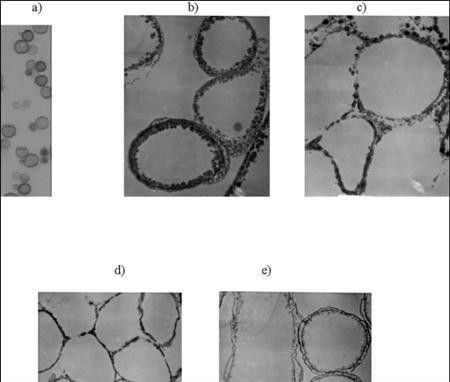Radio-Protective Melanin Viable For Space Science

Sun bathers can now relax as new findings seek to unravel the radio-protective properties of melanin. Scientists are now probing melanin's self-restorative and radio-protective properties for space science.
The impact of melanin on skin cancer has long been debated, despite knowledge that melanin is protective against sun's damage, caused by visible and ultraviolet light impacts on the skin. As skin cancer gets linked to suntans and excessive exposure to sun, a new study on aspects of melanin's radio-protective properties is seen as a breakthrough for future biomimetic material by scientists.
Researchers at the U.S. Department of Energy's Savannah River National Laboratory (SRNL), in collaboration with the Albert Einstein College of Medicine, have provided new insights into the electrochemical mechanism that gives the complex polymer, melanin, its long-term radio-protective properties. The aim of the study is to utilize the new findings to develop materials that mimic the natural radio-protective properties of melanin.
The research paper noted, Melanized microorganisms are often found in environments with very high background radiation levels such as in nuclear reactor cooling pools and the destroyed reactor in Chernobyl. These findings and the laboratory observations of the resistance of melanised fungi to ionizing radiation suggest a role for this pigment in radioprotection.
A naturally occurring chemical pigment, melanin, which is produced by multitudes of the planet's life forms also protects some species from ionizing radiation. Researchers noted that melanin, in certain microbes, was linked to increased growth in the presence of ionizing radiation, especially in organisms found near the former nuclear reactor facilities in Chernobyl.
The study published in the journal Bioelectrochemistry testifies how researchers established the impact of ionizing radiation on interacting with melanin. The interaction altered its oxidation-reduction potential, producing an electric current. This led to the understanding that melanin can self-restore and provide added radioactive protection in organisms.
Over time, as melanin is bombarded with radiation and electrons are knocked away, you would expect to see the melanin become oxidized or bleached out, and lose its ability to provide protection, said Dr. Charles Turick, Science Fellow with SRNL, but that's not what we're seeing. Instead, the melanin continuously restores itself.
The research studied the self-restoration mechanism of melanin by demonstrating that melanin can receive electrons, countering oxidizing effects of the gamma radiation. The work showed, for the first time, that constant exposure of melanin to gamma radiation results in electric current production.
Turick explained, Mimicking that ability would be useful, for example, in the space industry, where satellites and other equipment are exposed to high levels of radiation for long spans of time.
Turick said, Looking at materials, a constantly gamma radiation-oxidized electrode consisting in part of melanin would continuously accept electrons, thereby resulting in a current response. If we could understand how that works, we could keep that equipment working for a very long time, he added.
Researchers investigated the radio-protective properties of melanin by subjecting human pathogenic fungi Cryptococcus neoformans and Histoplasma capsulatum in their melanized and non-melanized forms to sub-lethal and lethal doses of radiation of up to 8 kGy.
The contribution of chemical composition, free radical presence, spatial arrangement, and Compton scattering to the radio-protective properties of melanin was investigated by high-performance liquid chromatography, electron spin resonance, transmission electron microscopy, and autoradiography techniques.
Study authors inferred, Melanin protected fungi against ionizing radiation and its radio protective properties were a function of its chemical composition, free radical quenching, and spherical spatial arrangement.
© Copyright IBTimes 2024. All rights reserved.





















